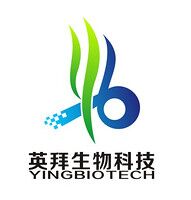T輔助細(xì)胞分化ChIP PCR芯片 T Helper Cell Differentiation ChIP PCR Array
科技服務(wù) > 生物芯片實(shí)驗(yàn)服務(wù) > T輔助細(xì)胞分化ChIP PCR芯片 T Helper Cell Differentiation ChIP PCR Array

T輔助細(xì)胞分化ChIP PCR芯片 T Helper Cell Differentiation ChIP PCR Array
T輔助細(xì)胞分化ChIP PCR芯片T Helper Cell Differentiation ChIP PCR Array
運(yùn)費(fèi) ¥0.00
| 地區(qū): | 上海 |
| 簡(jiǎn)介: | T Helper Cell Differentiation ChIP PCR Array |
| 提供商: | SAB |
| 服務(wù)名稱: | T Helper Cell Differentiation ChIP PCR Array |
T Helper 1 Subtype Markers: CCR5, HAVCR2, IGSF6, IL12B, IL18, IRF1, SOCS1, SOCS5, TLR4, TLR6, TNF. T Helper 2 Subtype Markers: CCL5, CCL7, CCR3, CCR4, CEBPB, GFI1, GPR44, ICOS, IL13RA1, IL4R, JAK1, NFATC1, NFATC2. Transcription Factors: CEBPB, FOSL1, FOXP3, GATA3, GATA4, HOXA10, HOXA3, ID2, IRF4, IRF8, MAF, NFATC1, NFATC2, NR4A1, NR4A3, POU2F2, REL, RELB, RORA, RORC, RUNX1, RUNX3, STAT1, STAT6, TOX, ZBTB7B. Genes Differentially Expressed and Enriched with H3K4me3 but not with H3K27me3: Th1 Cells: EOMES, IFNG, IL12RB2, IL18R1, IL18RAP, FASLG, TBX21. Th2 Cells: ASB2, GATA3, IL13, IL1RL1, IL4, IL5, PPARG. Th17 Cells: IL17A, IL17RE, IL1R1, IL21, RORA, RORC. Inducible and Natural T Regulatory (iTreg and nTreg) Cells: CCL4, CCR6, FOSL1, FOXP3, IKZF2, IL9, IRF4, IRF8, MYB, NR4A1, NR4A3, POU2F2, REL, RELB, TGIF1, TNFSF11. Genes Differentially Methylated at Their Proximal Promoters in Conventional Versus Regulatory T Cells: CACNA1F, CHD7, FOXP3, GATA4, HOPX, HOXA10, HOXA3, ID2, IKZF2, IL1R2, IL2RA, KIF2C, LRRC32, PERP, PKD2, TNFRSF9, TP53INP1, UTS2. |








